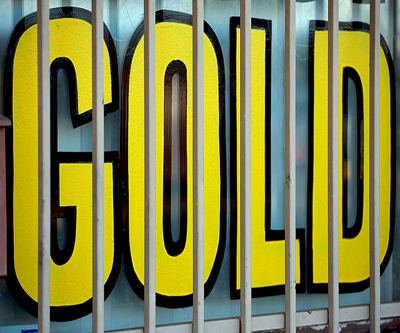
The recent rally in the price of gold came to a halt Monday ahead of a two-day US Federal Reserve meeting starting on Tuesday and amid continued outflows from gold-backed ETFs.
In late trade on the Comex market in New York, February gold futures changed hands at $1,255.20 down $8.30 or 0.7% from Friday’s close after earlier in the day climbing to a fresh two-month high above $1,270.
The sell off on financial markets on Friday which continued into Monday saw gold gaining for five straight weeks and trade 5% higher year to date.
Gold’s 28% price drop in 2013 were marked by a rotation out of gold-backed ETFs into riskier assets like equities and despite gold’s strong performance in 2014, investors continued to pull their money out of ETFs.
Over the past four weeks, holdings dropped by 28.1 tonnes to 1,739 tonnes across the more than 100 gold-backed ETFs listed around the globe. Holdings peaked in December 2012 at more than 2,600 tonnes.
Holdings of the world’s largest gold ETF – SPDR Gold Shares (NYSEARCA:GLD) – dropped 6.6 tonnes last week – as the price of gold was rallying. At 790.4 tonnes GLD holdings are at the lowest level since January 2009 after a whopping 552 tonnes left the fund last year.
The Federal Open Market Committee meeting which wraps up on Wednesday is widely expected to deliver another $10 billion reduction to the $75 billion a month purchases under its quantitative easing program that has pumped $4 trillion of easy money into the US economy.
Monetary expansion in the US and around the globe, particularly since the financial crisis, has been a massive boon for the gold price. Gold was trading around $830 an ounce before Chairman Ben Bernanke announced Q1 in November 2008.
Should the Fed announce that it is throttling the program back at an increased rate which would boost the dollar, it could spell trouble for the price of gold.
Charles Plosser, president of the Philadelphia Federal Reserve, recently said asset purchases should be wound down sooner than the end of the year, while Dallas President Richard Fisher said he wanted the taper to be double the size it was, that is $20 billion.